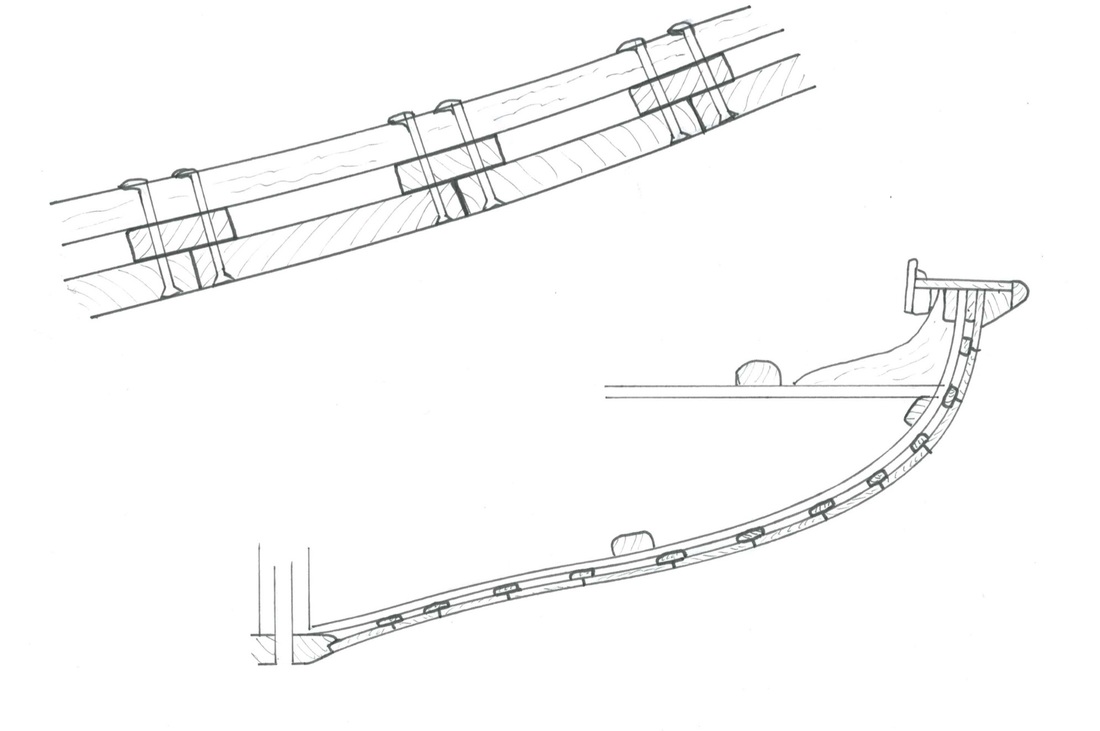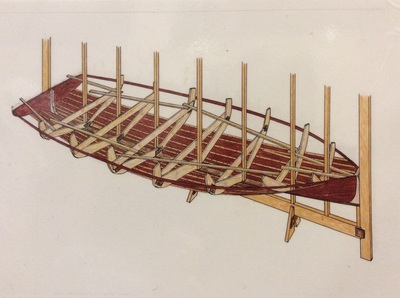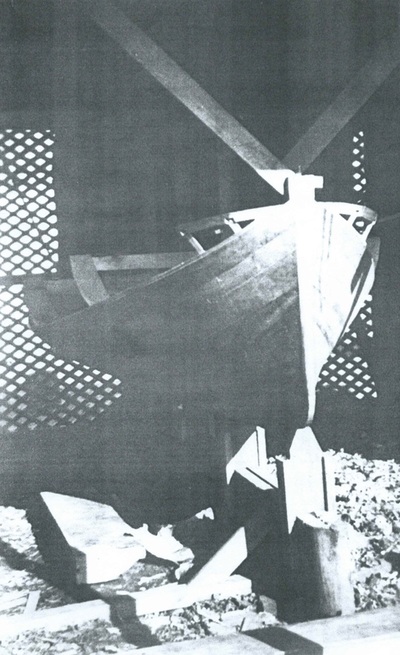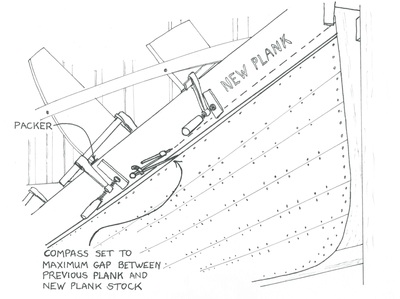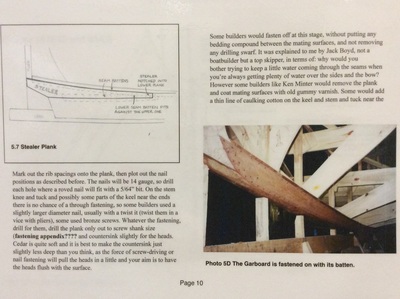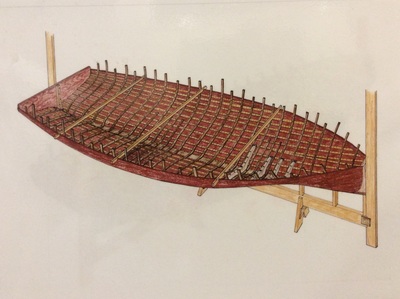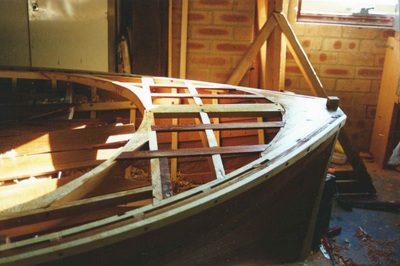One boatbuilding method dominated the construction of Australian Open Racing Boats from the 1870's to the 1950's,namely batten-seam carvel construction.Light planks are butted against each other in section, with a light batten covering the joint on the inside. The planks are fastened to the batten as well as to steam-bent ribs that hold it all together.
The method originated in American whaleboats, and with Sydney being a busy whaling port in the middle of the nineteenth century, local boatbuilders were familiar with, and experienced in the method and began to build the growing racing fleet with batten-seam carvel planking from the 1870's.
Open Boats were almost invariably built right-way up, with the keel set up on a strongback to the required spring or rocker, with the stem, stern knee and tuck (transom) attached. Normally between three and five temporary moulds were set up on the keel and the planking, almost always of Australian Cedar, a lightweight and durable hardwood was laid around the moulds. The seam battens were fitted with each plank, and each plank is fastened to the battens with copper nails and roves.
Open Boats were almost invariably built right-way up, with the keel set up on a strongback to the required spring or rocker, with the stem, stern knee and tuck (transom) attached. Normally between three and five temporary moulds were set up on the keel and the planking, almost always of Australian Cedar, a lightweight and durable hardwood was laid around the moulds. The seam battens were fitted with each plank, and each plank is fastened to the battens with copper nails and roves.
Planks needed to be fitted carefully, and batten-seam construction requires a few specific techniques not usually found in regular carvel planking.
Ribs of steam-bent hardwood (mostly Spotted Gum) are fitted into the hull, fastened off with copper nails, most often clenched (bent over). Longitudinal stringers are fitted, then the centreboard case, thwarts, knees and decking.
This is a pretty basic introduction. The Open Boat book includes full details of how these boats were built, from lofting to launching. Using the building of the replica of Britannia in 2001-2, the book details the stages and the techniques with additional input from interviews with several of the last surviving boatbuilders that had built these boats before 1950, with enough written details, photographs and explanatory drawings to enable anyone with boatbuilding skills to build a replica, and provide a record of an important part of our maritime industrial heritage.
